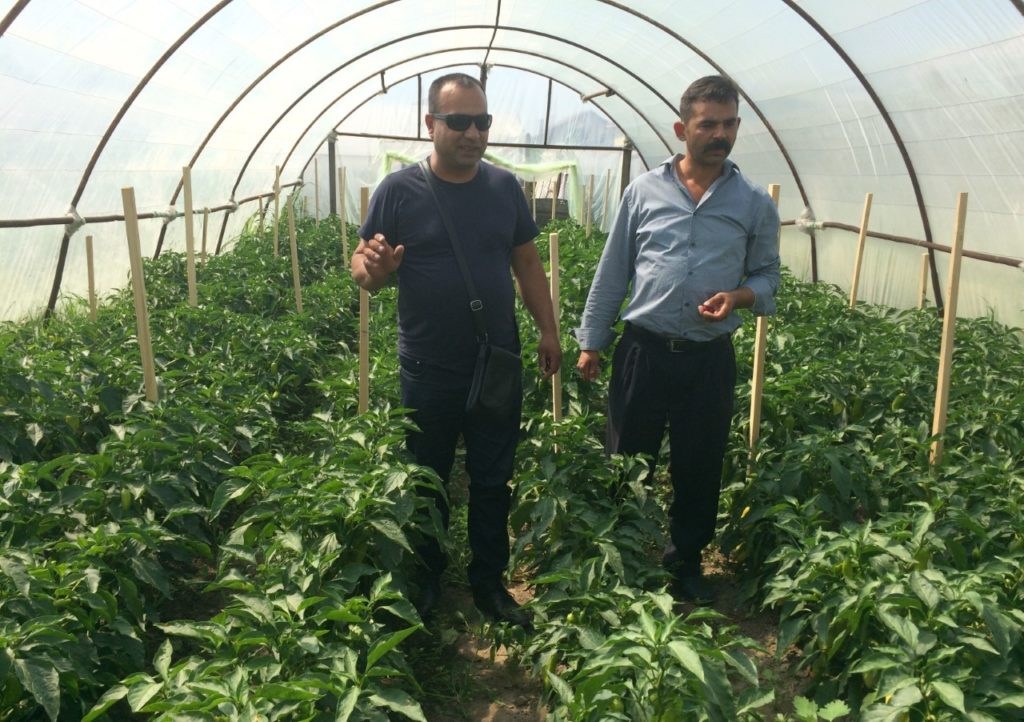As the EU negotiates a plan for economic recovery from the COVID-19 crisis, our economies cannot afford another lost and unfair decade in which some Europeans lose much more than others.
The announcement yesterday (18 May) by German Chancellor Merkel and French President Macron on the creation of a €500 billion recovery plan is hopeful only if all citizens have a fair opportunity unlike in the previous ‘recovery.’
In the decade following the 2008 financial crisis, the EU and national governments mismanaged the recovery and it increased inequality among citizens as a report by the European Investment Bank shows. Across the EU, none suffer more from inequality than the Roma and, given the size and structure of the Roma population in an ageing Europe, the economic losses from this are too significant to ignore.
If the Roma were to live in one country in the EU, without counting the Roma in the candidate countries, it would have a population of six million―bigger than Denmark or Finland or another 10 member states. Apart from its size, the youthfulness of the Roma population makes it even more relevant.
For example, in Hungary, the number of Roma below 15 years old is three to four times higher than the number of non-Roma in that group. In Romania, children under 15—the new generation of labor market entrants—make up almost 40% of the total Roma population, compared to 15% among the general population.
In contrast, the general labor-market demography of Europe is grim. By 2025, the demand for labour will start to exceed the supply in countries such as Bulgaria, the Czech Republic, Germany, Hungary, and Slovakia, according to a study by The Vienna Institute for International Economic Studies.
In a historical blink of an eye, Eurostat projects that by 2050, the working-age population will decline by about 10% across the EU, while in Central and Eastern Europe it will fall by 30%. The EU and national governments need to invest in the Roma—not because it is a matter of charity or pity, but because it is in everyone’s economic interest, and especially in the interest of the EU’s economic future.
Lessons learned
The EU and its member states were made aware of the necessity to invest in the Roma right after the 2008 financial crisis. Back then, the World Bank reported that the inequality faced by Roma caused significant economic losses: for example, annual productivity losses ranging from 526 million euro in Bulgaria to 887 million euro in Romania, and annual fiscal losses ranging from 202 million euro in Romania to 370 million euro in Bulgaria.
However, far-right politicians capitalized on the anger that had erupted in the aftermath of the 2008 crisis and launched anti-Roma campaigns. Other politicians chose to ignore these facts. Consequently, they inflicted financial losses on all their citizens, and the situation of the Roma went from bad to worse―worse than for any other group.
In the richest continent on Earth, 80% of Roma live below their country’s threshold for being at risk of poverty, according to a study in 2016 by the EU Agency for Fundamental rights. Not much has changed since then. About 30% live in housing without tap water, and every third Roma child lives in a household where someone went to bed hungry at least once in the previous month.
The number of Roma children in segregated, substandard education increased by half―from 10 percent to 15 percent―between 2011 and 2016. Following the World Bank’s logic, this means the increase in inequality for Roma in the last decade increased Europe’s economic losses even more.
As the COVID-19 crisis rages and with lockdown restrictions still in place, the Roma are in a much worse situation than any other group according to a recent report from the Open Society Roma Initiatives Office. Physical distancing is more challenging in overcrowded communities, and hand washing is impossible without a water supply.
Distance education measures could leave more than half of Roma children out of schooling and will likely lead to an increase in the already high dropout rates. Roma workers and entrepreneurs, who are much more likely than others to be working in jobs that cannot be done from home―in the informal economy, in labor intensive and low-wage work, or in the arts and culture industry—are not included in the current crisis response measures.
In this context, the choices that the EU’s political leaders make now about the recovery will make an enormous difference. Far-right and authoritarian populists will choose, as always, to use the Roma as scapegoats for gaining votes, while other politicians might again choose to ignore the economic significance of Roma and the inequality that they suffer.
As we saw in the previous lost decade, these choices cannot bring positive outcomes―not for the Roma and not for the EU and its member states. Economically, such choices will only bring more losses in much needed public revenue. Politically, they will lead to interethnic and social conflicts that strengthen the far right and authoritarians who aim to further destabilize the EU. We cannot afford this.
A new way
I encourage those who are deciding about the EU recovery to choose to invest in the Roma, a population that, across Europe, is youthful, vibrant, multilingual, creative, resilient, and adaptable. In the short term, those who had jobs and businesses before the COVID-19 crisis will need support in returning to work and re-entering markets.
In the medium term, Roma entrepreneurs will need credit guarantees and investment for creating new jobs and our workers will need vocational training to meet the needs of the labor market. Investments in market- and technology-driven education for our children and youth will provide longer-term economic benefits for the EU.
The grants and loans given to the national governments for the recovery should include these measures, and the European Commission and its financial institutions―for example, the European Investment Bank—should complement them with transnational programs. They should take responsibility for some of these measures and complement those of national governments by targeting cities, towns, and districts with a higher proportion of Roma directly.
A major challenge the EU and national government have to address is to support the informal economy where Roma are multiple times more represented than others by measures such as these:
• Protect people affected by temporary loss of income, specifically targeting informal entrepreneurs and vulnerable workers (street vendors, informal recyclers, amusement park workers, day laborers, musicians, artists, and other entertainment workers).
• Support self-employed or active in the informal sector by stimulating (micro-)finance institutions to providing loans in vulnerable communities For example, establish a guarantee fund to stimulate investments in businesses owned by social groups that are at risk of poverty or face exclusion.
• Devise support schemes for businesses providing employment to vulnerable people. For example, at least 30 percent of all public works funded by the European Union should be implemented by small and micro-enterprises employing staff from vulnerable communities.
• Invest in programs to teach new skills to Roma and other vulnerable groups, delivering market-driven vocational training to make them more resilient in the face of future threats, such as those posed by automation and artificial intelligence.
• Deploy integrated finance interventions: financial literacy, combining repayable and non-repayable finance, and reinforced microfinance interventions focused on employment assistance and job creation, as well as support for self-constructed housing through microloans.
These and other innovative solutions, however, are only possible if Europe’s leaders have enough courage, wisdom, and statesmanship to care for all citizens. Leaders must realize that investing in the capabilities of Roma can help the EU and all its citizens recover from public deficits of fairness, revenue, and stability.
By Zeljko Jovanovic


